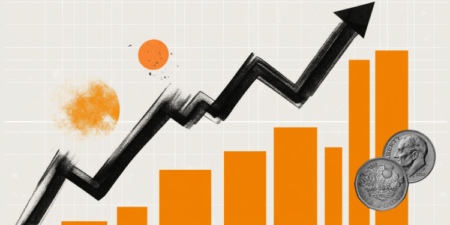- Mexican Peso shows resilience despite 25% US tariffs on steel and aluminum set for March 12.
- Fed Chair Jerome Powell’s latest comments underscore a less restrictive policy stance, affirming economic strength.
- Mexico’s Industrial Production deteriorates, but Peso benefits from market dynamics despite Banxico’s dovish tilt.
The Mexican Peso (MXN) remains steady against the Greenback on Tuesday after finishing Monday’s session with losses of 0.35%. Still, it stages a comeback as United States (US) President Donald Trump imposes 25% tariffs on Mexican steel and aluminum, expected to be effective March 12. Contrarily to depreciating, the Mexican currency strengthens slightly and the USD/MXN pair trades at 20.59, down 0.23%, after hitting a daily high of 20.65.
Federal Reserve (Fed) Chairman Jerome Powell has crossed the wires as of this writing. He said the Fed’s policy stance is less restrictive than it had been, adding that the economy remains strong and that “we do not need to be in a hurry to adjust our policy stance.”
Powell reiterated that monetary policy is in a good place and the US is not in a recession.
In Mexico, Industrial Production continued to deteriorate in December, highlighting the country’s economic slowdown. Despite this and Banco de Mexico’s (Banxico) dovish approach, the Peso has extended its gains.
Ahead this week, the US economic docket will feature the US inflation figures on the consumer and the producer side, along with further Federal Reserve speakers.
Daily digest market movers: Mexican Peso brushes aside tariffs concerns and rise
- Mexico’s Industrial Production (IP) in December plunged -1.4% MoM, below the -0.5% contraction expected by economists. In the twelve months to December, IP plummeted -2.7%, shrinking more than November’s -1.4%.
- On Monday, Banxico Governor Victoria Rodriguez Ceja was dovish and revealed that the central bank could cut rates of the same magnitude as in February, adding that the job of bringing inflation to the 3% goal has not concluded.
- Rodriguez added that Banxico remains attentive to what might happen in March after the 30-day grace period provided by Trump.
- Cleveland’s Fed President Beth Hammack commented that she favors holding rates steady for some time so the Fed can assess the economy. She added that the policy is ‘modestly restrictive’ and emphasized that it is still unclear whether inflation will keep moving towards the Fed’s 2% goal.
- Trade disputes between the US and Mexico remain in the boiler room. Although the countries found common ground previously, USD/MXN traders should know that there is a 30-day pause and that tensions could arise toward the end of February.
- Money market fed funds rate futures are pricing in 38.5 basis points (bps) of easing by the Fed in 2025.
USD/MXN technical outlook: Mexican Peso to remain range-bound
The USD/MXN pair uptrend remains intact, but Tuesday’s price action shows the emerging market currency’s resilience. During the last four days, the pair has remained within the 20.30 – 20.70 area, with momentum slightly tilted to the upside, as depicted by the Relative Strength Index (RSI).
For a bullish continuation, buyers need to reclaim 20.70 before challenging the January 17 high at 20.90. Once surpassed, the next stop would be 21.00, followed by the year-to-date (YTD) at 21.29. On the flip side, sellers are driving the exchange rate below the 50-day Simple Moving Average (SMA) at 20.54, and the pair would be poised to test 20.00, but first bears need to clear the 100-day SMA at 20.22.
Mexican Peso FAQs
The Mexican Peso (MXN) is the most traded currency among its Latin American peers. Its value is broadly determined by the performance of the Mexican economy, the country’s central bank’s policy, the amount of foreign investment in the country and even the levels of remittances sent by Mexicans who live abroad, particularly in the United States. Geopolitical trends can also move MXN: for example, the process of nearshoring – or the decision by some firms to relocate manufacturing capacity and supply chains closer to their home countries – is also seen as a catalyst for the Mexican currency as the country is considered a key manufacturing hub in the American continent. Another catalyst for MXN is Oil prices as Mexico is a key exporter of the commodity.
The main objective of Mexico’s central bank, also known as Banxico, is to maintain inflation at low and stable levels (at or close to its target of 3%, the midpoint in a tolerance band of between 2% and 4%). To this end, the bank sets an appropriate level of interest rates. When inflation is too high, Banxico will attempt to tame it by raising interest rates, making it more expensive for households and businesses to borrow money, thus cooling demand and the overall economy. Higher interest rates are generally positive for the Mexican Peso (MXN) as they lead to higher yields, making the country a more attractive place for investors. On the contrary, lower interest rates tend to weaken MXN.
Macroeconomic data releases are key to assess the state of the economy and can have an impact on the Mexican Peso (MXN) valuation. A strong Mexican economy, based on high economic growth, low unemployment and high confidence is good for MXN. Not only does it attract more foreign investment but it may encourage the Bank of Mexico (Banxico) to increase interest rates, particularly if this strength comes together with elevated inflation. However, if economic data is weak, MXN is likely to depreciate.
As an emerging-market currency, the Mexican Peso (MXN) tends to strive during risk-on periods, or when investors perceive that broader market risks are low and thus are eager to engage with investments that carry a higher risk. Conversely, MXN tends to weaken at times of market turbulence or economic uncertainty as investors tend to sell higher-risk assets and flee to the more-stable safe havens.
Read the full article here
















